DNA Replication (A-level Biology)
Why Does DNA Replicate?
Most organisms produce new cells every day through a process called cell division which occurs continuously.
DNA replication occurs before the cell divides. DNA replicates itself during the S phase of the cell cycle so that each daughter cells has a copy of the DNA after cell division.
DNA replication mean that parents can pass their DNA to their offspring. This passing of DNA and the genetic information stored in DNA is known as “Genetic Continuity”. The replication of DNA is crucial to ensuring genetic continuity both during cell division and between parents and offspring during reproduction.
The Process of DNA Replication
1) Double Helix Unwinding
- The first step of DNA replication is unwinding of the DNA double helix. Because DNA is a base-paired double helix, it replicates itself by unwinding and using each of its strands as a template to form a new strand.
- Hydrogen bonds are broken during unwinding. There is breakage of hydrogen bonds between complementary base pairs on the two polynucleotide chains.
- An enzyme called DNA helicase is involved. DNA helicase unwinds the DNA by breaking the hydrogen bonds between complementary base pairs on the two strands of DNA.
- It is important to understand that the entire DNA does not unwind simultaneously. DNA replication occurs along an entire molecule of DNA and the unwinding happens in one region of the molecule at a time. This is done to ensure stability of the molecule.
- The unwound region of the DNA is called a “replication fork”. DNA gets unwound in one direction only, meaning the replication fork moves continuously in a unilateral direction.
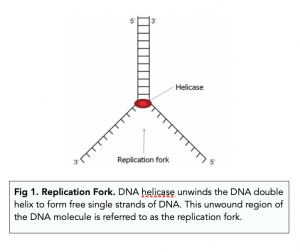
2) Semi-Conservative Replication
- DNA replication is semiconservative. The original strands of DNA act as a template for the synthesis of new strands of DNA. So each new DNA molecule is made up of one parent strand (see next point) from the original DNA molecule, and one new, daughter strand.
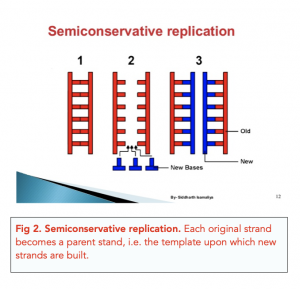
- The unwound strands of DNA are referred to as the parental strands. Free floating nucleotides in the nucleus are attracted to these parental strands of DNA.
3) DNA Polymerase (Condensation Reactions)
- Condensation reactions occur to complete DNA replication. The newly attracted nucleotides are only hydrogen bonded with the parental strand. To create a new strand of DNA, condensation reactions between these nucleotides need to occur in order to synthesise the daughter polynucleotide chain in order to complete DNA replication.
- DNA polymerase is the key enzyme. These condensation reactions are catalysed by the enzyme DNA polymerase, which reads the nucleotides and enables them to join. DNA ligase is responsible for the actual condensation reaction.
Mechanism of DNA Polymerase
- In a DNA double helix, the two strands are antiparallel. We previously established how in DNA, one strands goes from 3’ to 5’, and the opposite strand goes from 5’ to 3’.
DNA polymerase Works in the 5′ to 3′ direction
- DNA polymerase catalyses addition of free nucleotides. DNA polymerase “reads” the parental strand, and catalyses the addition of the free-floating nucleotides.
- DNA polymerase starts building at the 5’ end of the daughter strand. DNA polymerase can only bind to the 3′ end of a parental strand and work in one direction. This means they build the new strand in the 5′ to 3′ direction only.
- One of the daughter strands will be the leading strand. Since DNA strands are antiparallel but DNA polymerase can only work in one direction, replication has to occur in opposite directions on the two strands. Remember that DNA is also being unwound in one direction only too. The daughter strand which will go in the 5′ to 3′ direction towards the replication fork can be made continuously because the DNA polymerase can move continuously in this direction and follow the replication fork. This strand is called the leading strand.
- The other daughter strand will be the lagging strand. The other daughter strand will run 5′ to 3′ away from the replication fork. This strand cannot be made continuously as DNA polymerase can only build the new strand in opposite direction. Thus, DNA polymerase will need to keep detaching and reattaching to this strand, and this results in the new strand being built in short segments. This strand is called the lagging strand.
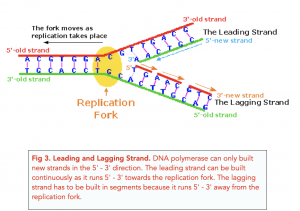
DNA polymerase reads and DNA ligase catalyses
- DNA polymerase reads the nucleotide sequence. When DNA polymerase binds to the parental DNA it reads the nucleotide sequence and recruits complementary nucleotides to form a hydrogen bond with the parental nucleotide. In doing so, DNA polymerase carries out a “proofreading” activity. It makes sure that only complementary nucleotides are pairing in order to prevent mutations from happening.
- DNA ligase catalyses condensation reactions. As the DNA polymerase recruits new nucleotides, DNA ligase catalyses condensation reactions between the new nucleotides to create a polynucleotide chain.
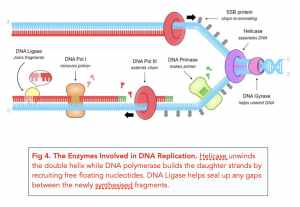
DNA Replication is the process of making a copy of the genetic information contained in DNA. This process is necessary for cell division and the transfer of genetic information from one generation to the next.
DNA Replication occurs through the semi-conservative mechanism, where each strand of the DNA double helix acts as a template for the synthesis of a new complementary strand. The DNA strands separate, and each strand is used as a template to build a new complementary strand by the addition of nucleotides.
The main enzymes involved in DNA Replication are helicase, primase, DNA polymerase, and ligase. helicase unwinds the double helix, primase synthesizes RNA primers, DNA polymerase adds nucleotides to the template strand, and ligase seals the gaps between the nucleotides.
RNA primers are short stretches of RNA that are synthesized by primase and are used to initiate DNA Replication. The primers provide a starting point for the addition of nucleotides by DNA polymerase. Once the primer is in place, the DNA polymerase can start adding nucleotides to the template strand, building the new complementary strand.
DNA Replication ensures the accuracy of the copied genetic information through the proofreading function of DNA polymerase. DNA polymerase checks each nucleotide before adding it to the new strand and corrects any mistakes. Additionally, there are enzymes, such as exonucleases, that can remove incorrect nucleotides from the new strand before the replication process is complete.
If DNA Replication goes wrong, it can result in mutations in the genetic information. Mutations can have a variety of effects on an organism, ranging from no effect at all to serious health problems. Some mutations can lead to the development of diseases, such as cancer, while others can result in changes in physical characteristics or behavior.
DNA Replication is important because it allows for the transfer of genetic information from one generation to the next. It is also necessary for cell division, allowing cells to divide and form new cells. Additionally, DNA Replication is essential for the repair of damaged DNA, helping to maintain the stability and integrity of the genetic information.





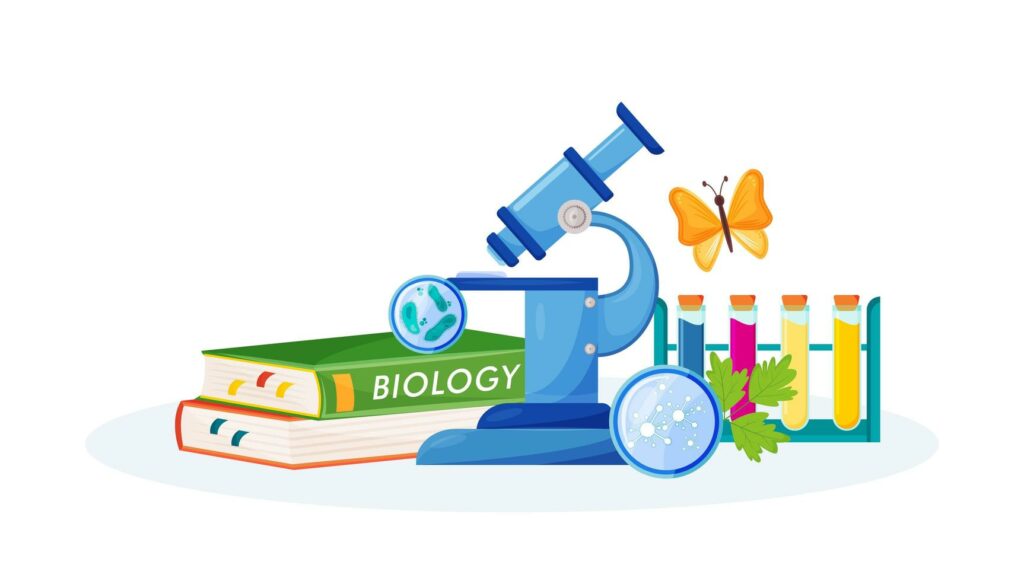
Still got a question? Leave a comment
Leave a comment